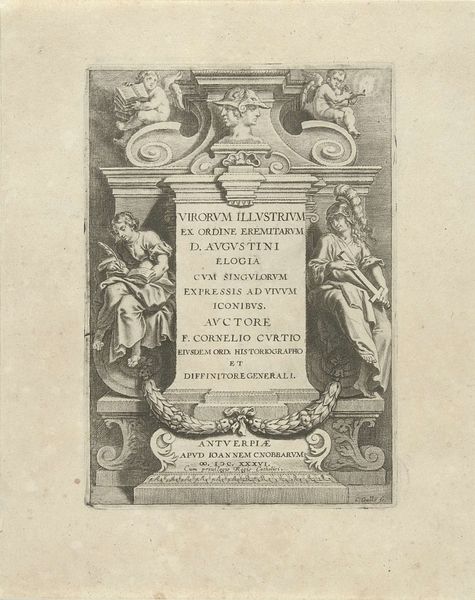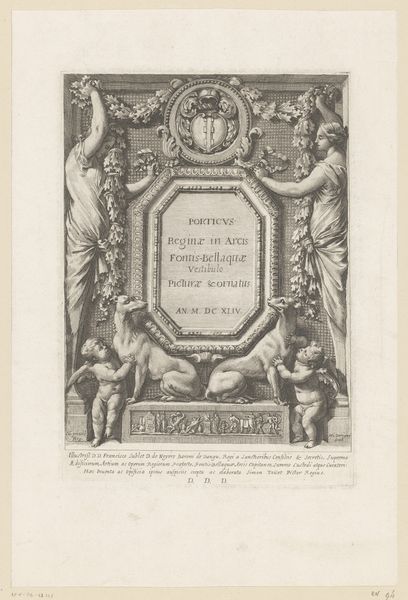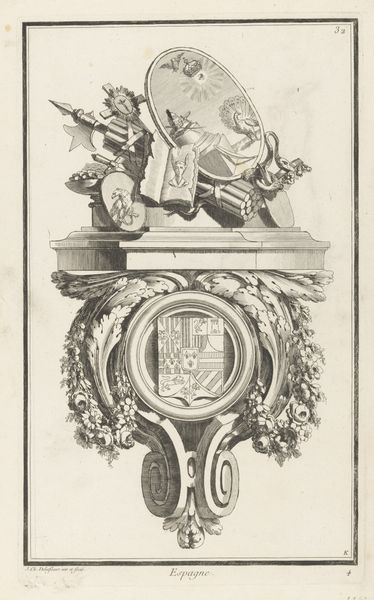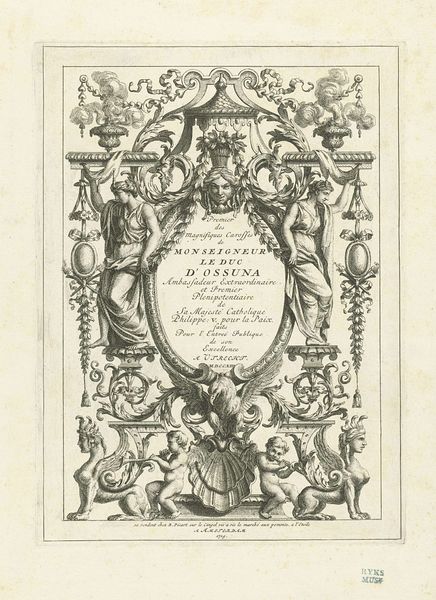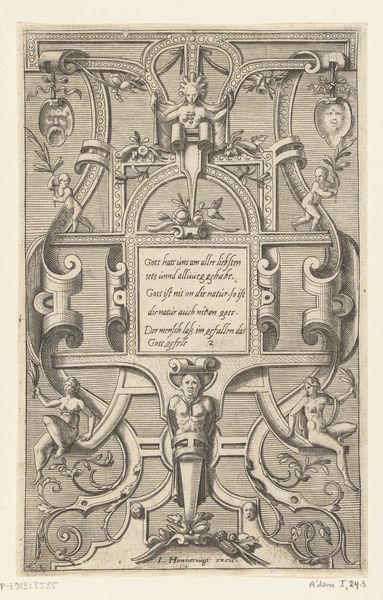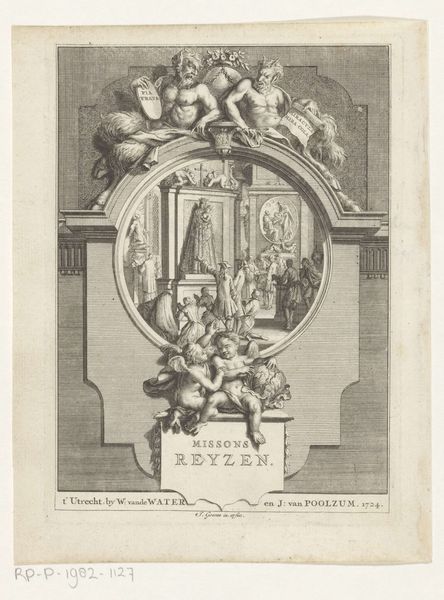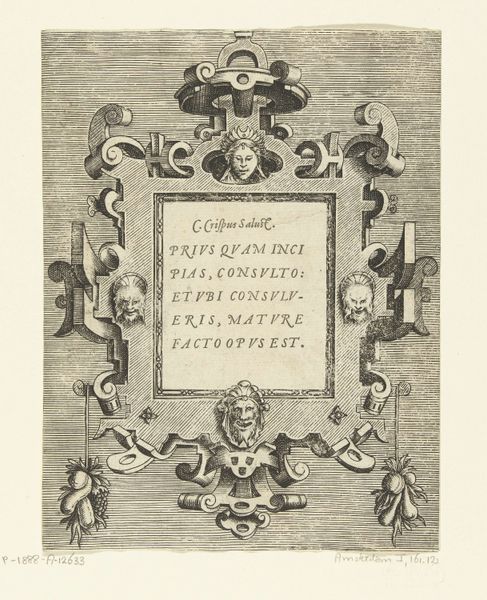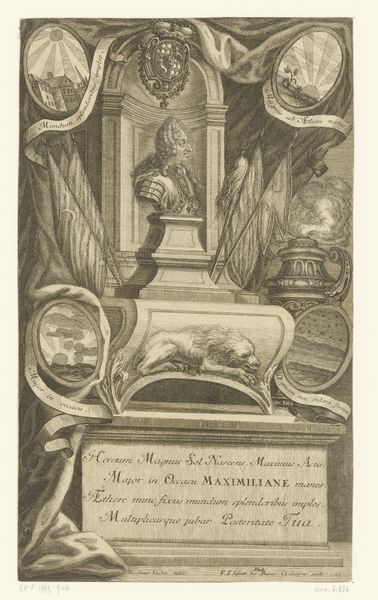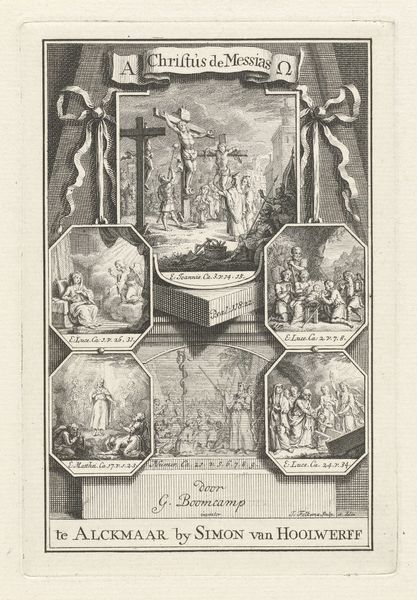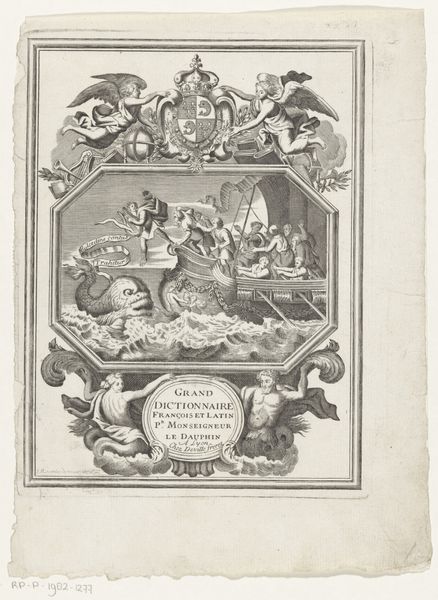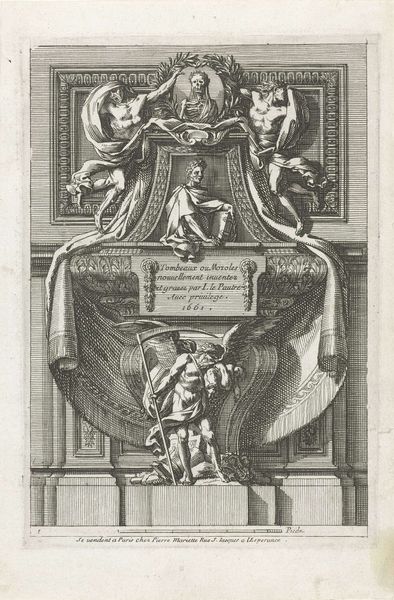
drawing, print, engraving
#
drawing
#
allegory
#
baroque
# print
#
figuration
#
line
#
history-painting
#
engraving
Dimensions: height 176 mm, width 133 mm
Copyright: Rijks Museum: Open Domain
Curator: Here we have an engraving from 1682 by David Philippe, titled "Justice Flanked by Two Parrots." What strikes you initially? Editor: There's such a weight to the composition, visually dominated by symbols of law and learning. It feels very self-consciously about displaying power. Curator: Precisely. Philippe presents us with an allegory steeped in the visual language of the Baroque era. Consider the engraving technique itself; the fine, detailed lines create a sense of order, fitting for the theme of justice. Editor: Engraving certainly lends itself to that feeling of precision. The material, the copper plate, and the labor intensive process—all geared toward creating multiples. It democratizes access to legal concepts, almost mass-producing authority. Curator: Good point. And what do we make of the placement of Justice above the title "PAPEGAEY ofte Formulier-Boeck" --Parrot or Formula Book-- for Willem van Alphen, Secretary in the Court of Holland? It’s framing the legal text as inherently tied to concepts of higher order. Editor: It's quite a declaration. Justice literally sits atop these documents. This suggests the role of law in the late 17th century, where its practice was visually interwoven with ideals of justice, reinforcing social structures of hierarchy. The parrots, positioned flanking justice, must be part of that narrative. What do they signify? Curator: Well, parrots are known for mimicry, and were kept as high-status pets. One might read them as symbolic of those who enforce the law, reiterating or applying established precepts, and also demonstrating wealth and the scope of empire with exotic specimens on display. Editor: So they’re less about dispensing true justice and more about projecting its image? And the books and papers further crowd the space. Is it intentional overload? Curator: I think so. The visual density and baroque detail convey that these complex processes have historical legitimacy. This piece serves as a political advertisement using readily understood symbology for the book and for the people involved. Editor: That definitely changes my view of this engraving. I saw a dense collection of symbols, but understanding the socio-political intention behind its creation brings a new, powerful context. Curator: Agreed. Considering the era and its players invites a more nuanced understanding.
Comments
No comments
Be the first to comment and join the conversation on the ultimate creative platform.
